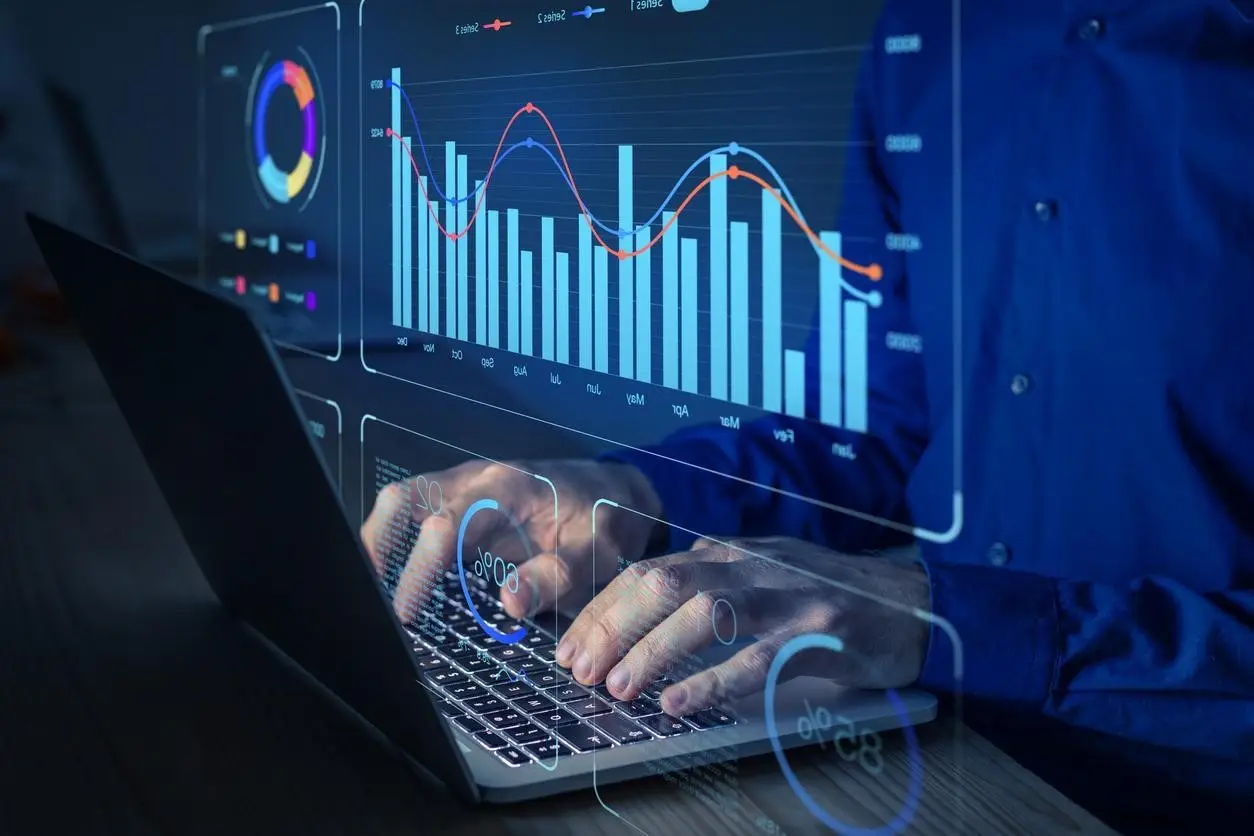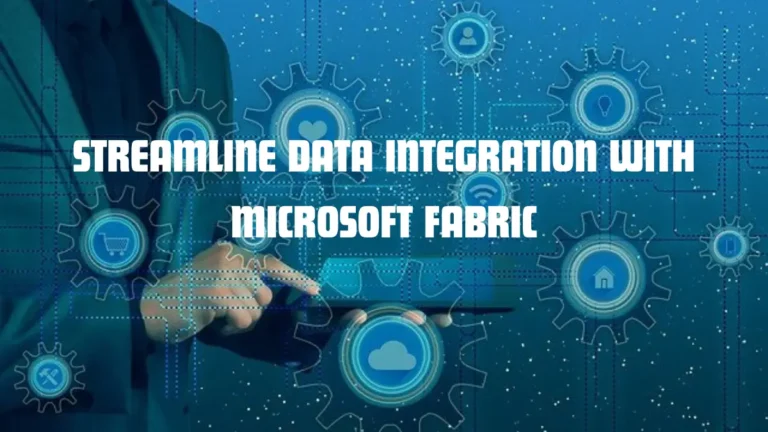Running a business requires making a lot of different decisions. Thankfully, due to the huge amount of data that’s available to us now, businesses are able to use prescriptive analytics to help make these decisions. Instead of trusting gut feelings or doing things the same way that they were done in the past, sophisticated prescriptive analysis can both predict outcomes and recommend the optimal decision to make in light of that outcome. This complex type of analysis is extremely powerful and something that all business leaders must understand.
Decoding decision trees in business analysis
The first area of prescriptive analytics that we’re going to look at is decision trees. They serve as a visual and analytical tool for mapping out complex decision processes, which then enables businesses to predict the outcomes of different choices. At their core, decision trees start with a single node representing the initial decision faced by a company. From there, branches expand to illustrate possible actions to be taken or events that might occur, each leading to further nodes and branches that represent subsequent decisions and outcomes.
The structure of these models is inherently hierarchical. It mirrors how one might naturally break down a problem into smaller parts. As you follow the branches from the root to the leaves, which symbolize final outcomes or decisions, you can visualize potential paths and weigh them against key business metrics or risks.
In predictive decision-making, decision trees provide an advantage by quantifying probable results based on historical data. They process this information through algorithms that split data into subsets based on certain criteria. This process is known as ‘branching’. Each branch then represents a choice made in response to specific conditions captured within your dataset. When you examine patterns in past events or behaviors, they help anticipate future scenarios, allowing for your planning to be more strategic.
Businesses will use different types of decision trees depending on their needs. Two common types are classification trees used for categorical dependent variables and regression trees that are applied when predicting continuous variables such as sales figures or profit margins. One way that this could be used is if a business was looking at customer churn rates. The business could use a classification tree to identify the reasons that contribute the most to customers leaving its service.
Making the most of optimization models
Optimization models are powerful tools that businesses use to make sure that their resources are being employed in the most efficient way. These models are mathematical in nature, and they aim to find the most effective solution based on whatever metric is most important. When researching optimization models, you’ll come across different types. Linear programming, integer programming, quadratic programming and dynamic programming are some of these examples, all serving different purposes.
In resource allocation and logistics, linear programming can help companies determine how to maximize profit or minimize costs through the lens of limited labor hours or raw materials. Integer programming is particularly useful for problems where the solutions must be whole numbers, such as determining the highest number of products that a business can ship without exceeding its storage capacity.
Combining optimization with other analytical methods can make things even more powerful. A simple way to do this would be to feed in the future trends that predictive analysis forecasts into an optimization model. To take this a step even further, machine learning algorithms can learn from previous outcomes and adapt over time. This is the power of prescriptive analytics.
Game theory in business decisions
Game theory is a mathematical framework designed to understand the competing perspectives of players in a game. When it’s used in business, it’s a powerful way to strategize in competitive environments. Managers and decision makers use game theory to anticipate the actions of competitors, customers, suppliers and even regulators.
When analyzing competitive interactions with game theory, you assess a number of scenarios where your decisions are interdependent on those of others. To use an example, imagine that you’re a business launching a new product. How might competitors respond? Will they undercut your price or introduce their own innovations? Game theory helps map out these potential moves and countermoves, much like chess players think several moves ahead.
In business applications, games fall into two broad categories: cooperative and non-cooperative. Cooperative games are those where participants can negotiate binding agreements that allow them to share resources or profits. These often occur within industries where partnerships and alliances are mutually beneficial. On the other hand, non-cooperative games involve players acting independently without collaboration, where the aim of each is to maximize their own payoff even at the expense of others. Most market competitions resemble non-cooperative games where businesses fiercely guard their strategies while trying to outmaneuver their rivals.
Pricing strategies offer a clear example of game theory at work in market competition. Businesses must consider not only the consumer demand, but also how competitors will set prices. If one company lowers its price for a product or service, rivals may follow suit. This could lead to a price war, which could be bad for the profits of all involved. An alternative to this is if businesses effectively agree not to lower prices below a certain point (without explicitly communicating this to one another). This is an outcome known as tacit collusion, and it results in both players maintaining higher profit margins.
The role of simulation models in business
Simulation models are a way of trying to predict what might happen in different scenarios. The models are dynamic and take into account a range of variables and random factors, trying to closely mimic real-world complexities. Companies can use simulations to test the outcomes of new strategies before actually implementing them, allowing them to see and visualize potential results before committing to a bigger investment.
This example is one of many simulations related to financial modeling, something that’s often taught in MBA courses. These types of courses have evolved a lot, and today they’re really flexible. As an example, the online MBA from St. Bonaventure University (SBU) is 100% online and, if you’ve been asking yourself, “how long to get an MBA online”, you can graduate in as little as 20 months. An online MBA from a reputable institution like SBU can be a very effective and efficient way to learn about simulations and everything else discussed throughout this article.
Another way that simulation models provide valuable information is when you’re uncertain about how a business decision may play out. They enable you to explore ‘what-if’ scenarios by tweaking inputs such as market conditions, consumer behavior or operational changes. This practice helps identify possible risks and their impacts on your business strategy. You might find that a retailer uses a simulation model to simulate peak shopping seasons under different staffing levels. By doing this, the retailer could determine the optimal workforce allocation to meet customer satisfaction and avoid having too few or too many staff working at one time.
The real beauty of simulation technology lies in its adaptability. It’s not a one-size-fits-all system. Instead, it can change to meet the needs of specific industries. For example, a logistics company might use simulations to make sure that its supply chain network is optimized. They can do things such as examining how changes in shipping routes affect delivery times and costs. In a different industry, a healthcare provider may simulate patient flow through emergency departments to try to reduce wait times without compromising care quality.
Using linear programming in operations
Earlier in the article, we outlined how linear programming can be a useful way to help manage resource allocation, but this is not the only way that it can be used. At its core, linear programming involves creating mathematical equations that represent problems and goals relating to a decision that needs to be made. Algorithms are then used to find the most efficient solution for the problem.
Sometimes, trying to optimize a system or process will be complex. If there are many different resources that require careful management, linear programming can be the best way to do so. Let’s say that a manufacturer is juggling multiple raw materials to make its products, and it’s hoping to do so in a way that is most profitable, while at the same time being efficient. By applying linear programming principles, this manufacturer can determine exactly how much of each product to produce in order to meet these goals.
If a transportation company needs to minimize fuel costs across its fleet while meeting delivery schedules and maintaining service quality, linear programming will help it to create the most efficient route for its vehicles. It will also help the business to schedule shipments based on capacity and demand, and allocate drivers’ time. Regardless of what the business is trying to do, there’s a good chance that linear programming can be used to make things easier.
Predictive modeling with optimization
The concept of predictive modeling is easy to understand. Imagine that you’re setting sail, and the ocean represents the future of your business. Predictive modeling is like a high-tech compass that helps you get to where you need to go, foreseeing problems and opportunities along the journey. If you now combine these predictions with optimization, it’s like having an experienced crew on your ship working tirelessly to adjust the course for the most efficient journey possible.
Generally, predictive modeling relies on historical data to identify patterns and forecast outcomes. With that said, it’s not just about guessing what might happen next – it’s about applying statistical techniques to make predictions. When combined with optimization, these forecasts become actionable strategies designed to achieve specific goals.
So, if you have a prediction for customer demand, for example, what do you do with it? Well, the optimization model can then decide the most efficient way to allocate resources based on where your predictive model thinks the customer demand is going to go. This might involve increasing or decreasing marketing spend and production volumes or introducing new products altogether.
Prescriptive machine learning models
When you add machine learning into the mix, things can get even more powerful, especially when it’s paired with prescriptive techniques. While prescriptive analytics makes recommendations, prescriptive machine learning models are able to learn and update themselves based on previous outcomes. It’s easy to see how much of a difference this could make.
When building and training prescriptive machine learning models, complex algorithms capable of processing huge amounts of data are required. These models learn from historical data and can then identify patterns and correlations before they’re applied in real-world scenarios. Training them requires comprehensive datasets and iterative refinement to make sure that the recommendations are accurate.
Real-time decision-making stands out as one of the most compelling reasons to use advanced machine learning systems. While a traditional prescriptive model might guide you on how to approach the next set period of your choosing, a model with machine learning will adjust and make decisions as circumstances change. Imagine a supply chain where inventory levels are automatically adjusted based on real-time sales data or market trends. This is a good example of how prescriptive machine learning models can offer immediate, actionable recommendations.
Just like with all prescriptive models, data quality is non-negotiable when implementing these sophisticated systems. Without clean, relevant and comprehensive datasets, even the best-designed model will struggle to provide useful advice. Also, integrating complex systems such as this within existing IT infrastructure may require some serious planning. These are just a couple of challenges that a business would need to consider.
Markov Decision Processes
Markov Decision Processes (MDPs) are another prescriptive technique, this time to be used in situations where outcomes are somewhat random and somewhat under the control of a decision maker. MDPs help to identify the best strategies when dealing with uncertain environments that can change and evolve quickly.
MDPs consist largely of states, actions, transition probabilities and rewards. A state represents the status of a system at a given point. Actions are choices available to the decision maker that can change the state. Transition probabilities evaluate the likelihood of moving from one state to another after an action is taken. Rewards provide feedback on the desirability of an outcome and guide decisions toward those with higher returns.
In a business context where uncertainty and complexity are common, such as supply chain management or customer behavior analysis, MDPs offer clarity on how today’s decisions might play out in future scenarios. They enable a business to think through a number of possible events using probabilistic forecasting, and then have a full set of information from which to make decisions.
Taking the theory of MDPs and turning it into practice requires a deep understanding of specific business problems. It also requires data-driven insights about all the different environmental dynamics that affect these business problems. Business leaders often tailor MDPs through an iterative process. They define clear objectives, collect relevant data, and create accurate representations of states and transitions. They then specify reward structures linked directly to business goals and refine their models based on either ongoing results or changing conditions within their industries.
Simplifying complex decisions with heuristic models
The final prescriptive analysis technique we’re going to discuss is heuristic models. They are predominately used as a means of simplifying complex decision-making processes. These models use rules of thumb or educated guesses to provide quick solutions that are often surprisingly effective. When they apply heuristics, businesses can cut through the noise and complexity of big data sets and challenging scenarios, and quickly hone in on the most viable options.
Developing effective heuristics requires both the problem at hand and the patterns that typically lead to successful outcomes to be well understood. Instead of just haphazardly choosing a direction, shortcuts must be identified based on experience and empirical evidence. To craft these mental shortcuts, you might start by looking at all the past decisions within your company or industry benchmarks, and search for commonalities that signal success.
A major aspect of using heuristic approaches is striking the right balance. It must be both accurate and simple. While it’s tempting to aim for perfect precision, this kind of approach may not always work. It could be impractical due to tight deadlines or at times when a quick response is required. Heuristics are a good way to achieve this speed while still maintaining a reasonable level of accuracy. ‘Good enough’ solutions won’t always be the best approach, but when they are, heuristics is the answer.
Conclusion
Whether you’re navigating supply chain disruptions or trying to stay ahead in rapidly changing markets, incorporating well-designed heuristic models into your analytical toolkit can empower you with agility and insightfulness amidst uncertainty.
Prescriptive analytics transforms the way that businesses make decisions. It provides clear action paths that use your data to its full potential. It can be used to make decisions about the upcoming week, the upcoming year, and everything in between. The businesses that are able to leverage this type of analysis the best are the ones that will be a step ahead of the competition in the future.




